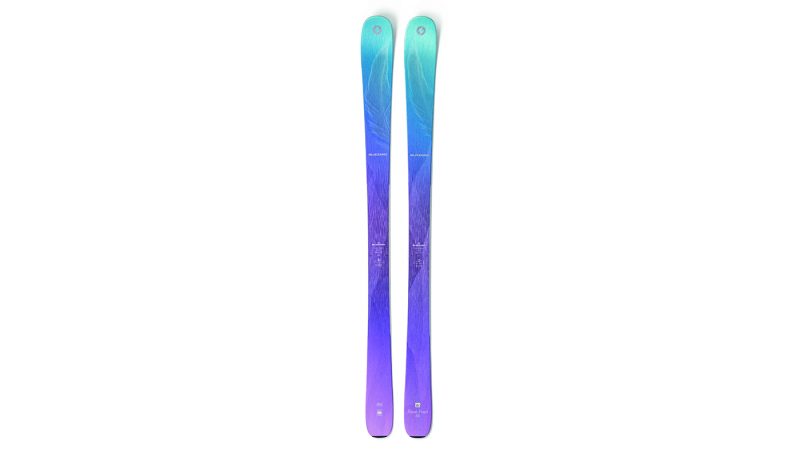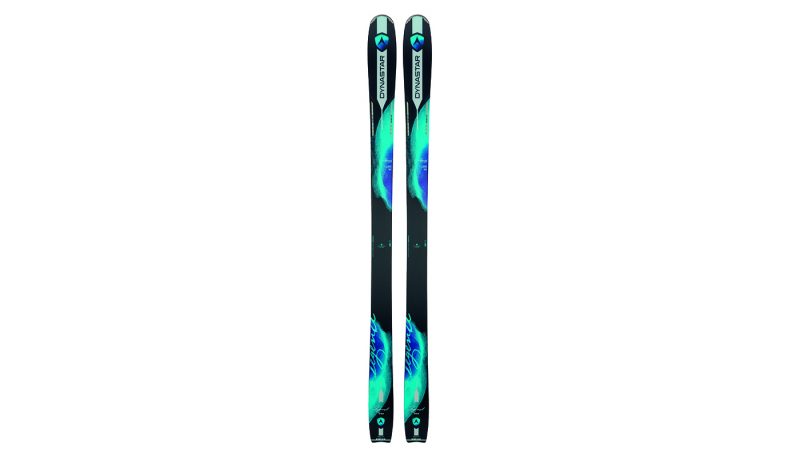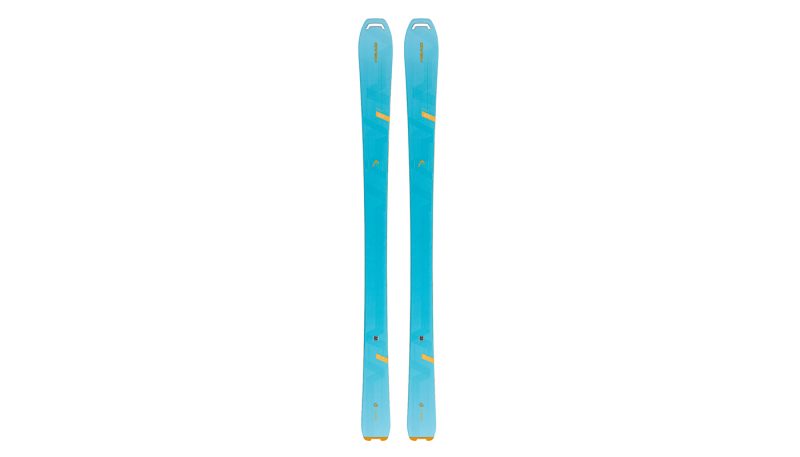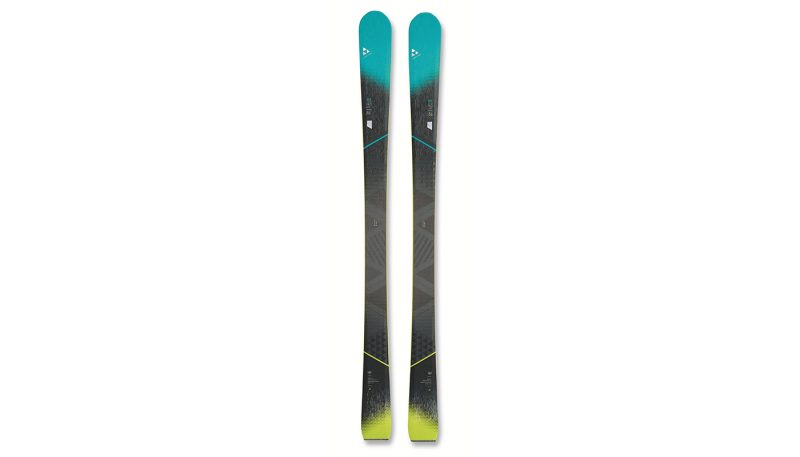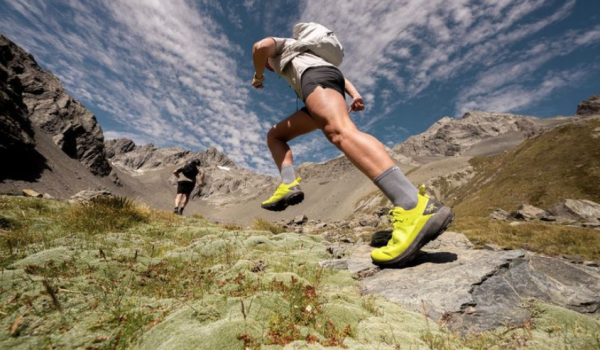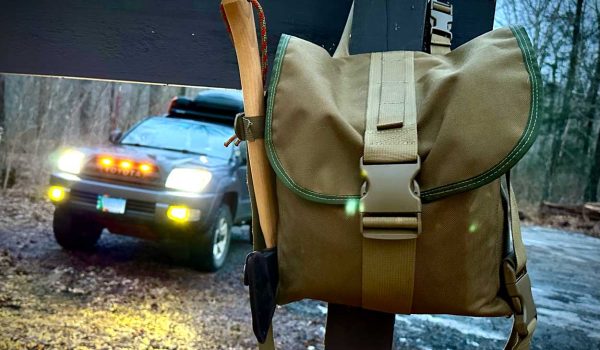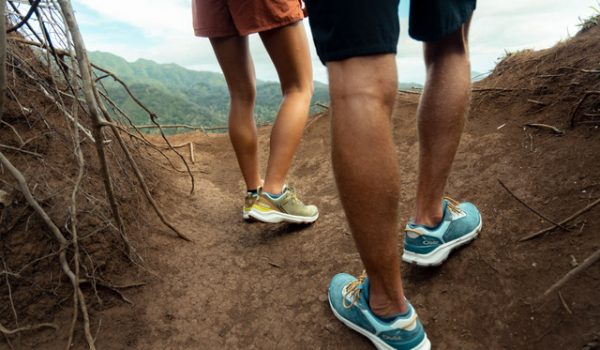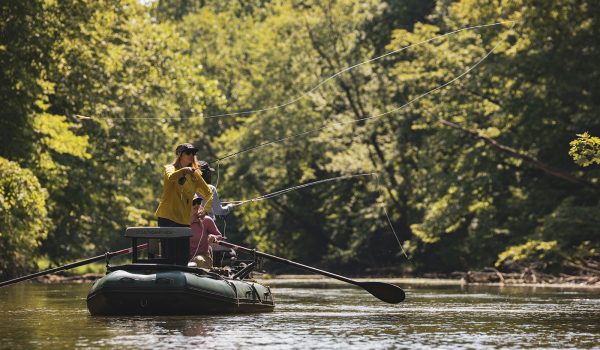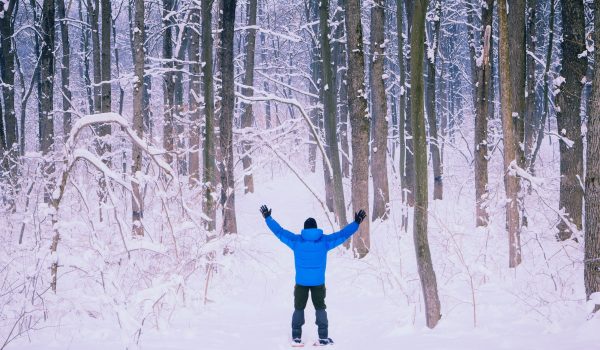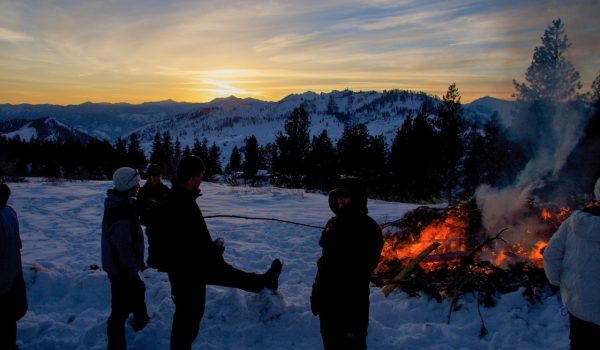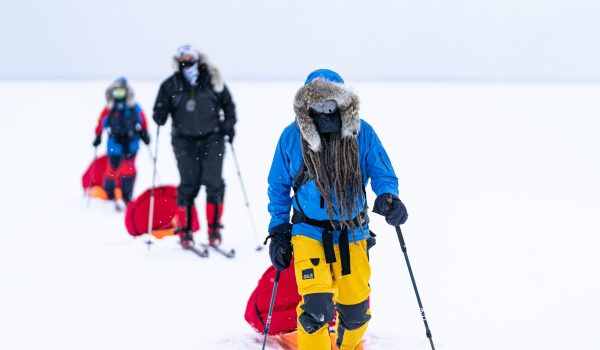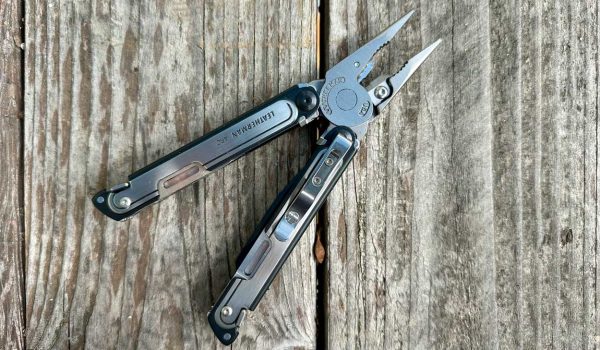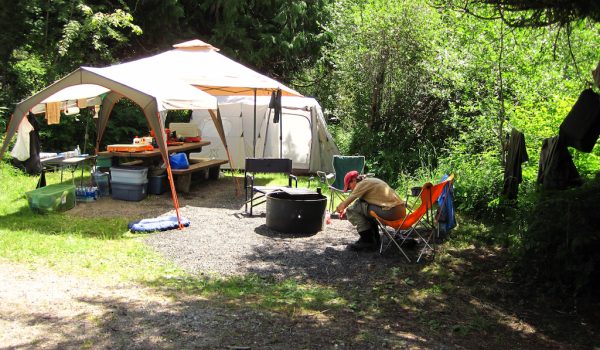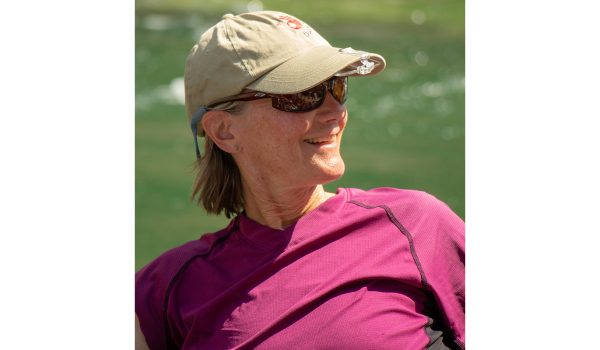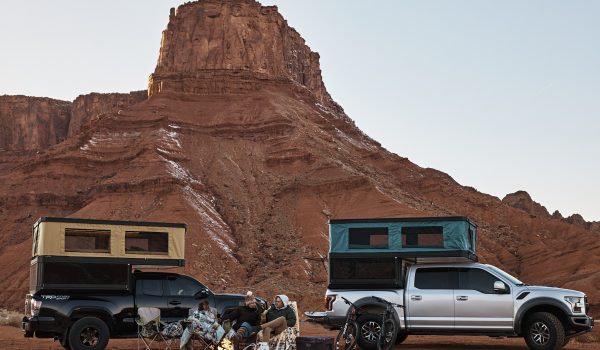Skis in the Frontside ski category are designed to carve up the corduroy or icy hardpack on the ski resort’s front trails. To achieve this, engineers put a premium on precision, edge grip, responsiveness and a relatively tight turn radius. Tip rocker is often added for ease of turn entry, while flat tails are common to help with quick turn exit. However, shapes can vary as waist widths do in this category. The Frontside ski waists range from 84 mm underfoot all the way up to up to 93 mm. The narrower the ski, the tighter the turn radius, but wider skis in this category have more versatility.
Some of the skis in this category are inspired by World Cup racing skis, with design elements that reduce weight, increase edge grip and smooth out the flex. It’s common to find sandwich sidewall constructions with a wood core and a material like carbon or titanium that adds torsional rigidity. Other skis in this category are descendants from wider, All-mountain oriented siblings and have the ability to butter or smear instead, though often at the sacrifice of some amount of edge-hold.
When testing Frontside skis, testers used the following criteria: Stability, Edge-hold, Carving Pleasure, Turn Shape Variability and Resort Flotation.
Stability
Stability refers to how confidently the tester felt the ski reacted to a variety of snow conditions and terrain. Stability can come from great snow contact or edge grip, but also a damp construction. Testers often use comments such as “solid at speed,” “huge sweet spot,” and “conquers crud or cut up powder.” Stability also comes in to play when testers think about skiers who are looking to improve or breakthrough from beginner to intermediate and would benefit from a ski that increases confidence by providing a stable platform.
Highest Stability scores were given to the Head Wild Joy, Blizzard Black Pearl 88 and Kastle LX 85. Testers felt that the Wild Joy had a great combo of stability and agility. Thanks to this trait, testers agreed the Wild Joy could elevate an intermediate skier to advanced, while adding enough interest to experts. Testers appreciated the well-balanced flex and stability of the Black Pearl 88 in a variety of turn shapes. The Nordica Santa Ana 93 felt “sure-footed” and stable as well as the Stocklil Stormrider 85, which felt “bomber underfoot.”
Edge-hold
Edge-hold, or grip, refers to the ski’s performance on edge and its ability to hold an arc on firm snow. Testers talk about feeling the ski edges engage in the snow from tip to tail, like railroad tracks. Race skis typically have vertical sidewall sandwich constructions, built for precision and maximum grip. Testers talk about the skis hooking up, sometimes too much in certain turn shapes, or sometimes appropriately for a feeling of great rebound.
The Blizzard Black Pearl 88 received high marks here, as well as Nordica Santa Ana 93, Stockli Stormrider 85 and Fischer My Pro Mt 86. The Scott Slight 83 W was “zippy, edge-to-edge,” with good short-turn radius edge grip.
Carving Pleasure
Carving Pleasure refers essentially to how fun the ski feels while carving. Specifically testers look at the ski’s ability to hold the turn consistently throughout a small, medium or large radius turn. Carving comments often mention ease of turn initiation or exit of the turn. Testers also look at the flex pattern of the ski, whether it’s a soft-flexing ski (“easy going flex pattern for a variety of ability levels”) or stiff (“needs a hefty skier to stomp on this ski”). When looking at this criteria, some skis fit into one of two descriptions: directional or bi-directional. Directional means the ski seeks the fall line and probably has a race-inspired construction. Bi-directional means the ski has a more surfy feel with a freeride-inspired construction.
Most skis in this category received moderate to high scores here, with the Head Wild Joy, Blizzard Black Pearl 88 and Kastle LX 85 taking the lead. The K2 Alluvit 88 had an “easy sweet spot,” which increased Carving Pleasure.
Turn Shape Variability
Versatility is trending in the Frontside category as manufactures seek to make skis that blend great edge-hold with wider waist widths. This blend of skills increases versatility for moguls to hardpack to light powder. However, Turn Shape Variability also refers to turn radius and testers often categorized turns as SL-type turns (tighter turn radius) to GS-type turns (larger radius turns).
The Head Wild Joy, Black Pearl 88 and Dynastar Legend 87 W received high scores for Turn Shape Variability across the board because testers felt it shined in all turn shapes.
Flotation
Flotation for the Frontside category refers to Resort Float, or the ski’s ability to provide some flotation in soft snow (but not huge powder days). This most often refers to the tip’s performance and waist width. Some of the tips in this category have some sort of weight-reducing technology, which not only decreases swing weight but also increased flotation and nearly all have some amount of tip rocker, which helps with flotation as well as adding maneuverability.
The Head Wild Joy and the Blizzard Black Pearl 88 received high scores for flotation, which really translates to versatility from groomers to a little bit of off-piste terrain or soft snow. They all have fairly wide tips which help with float.
Review Conclusion
In reality, typical daily snow conditions include groomers and hardpack and call for a Frontside ski with a narrow to mid-fat waist width, best for performance-oriented carved turns. Many consumers are looking for a ski that can perform well on hardpack as well as some soft snow, while providing stability and sturdy edge-hold. Some of the skis feel more dynamic and energetic, while others feel stable and predictable.
Frontside skis lean heavily on edge grip and carving, while All Mountain skis focus more on versatility or a blending of skills. With a waist width range between 70 mm and 90 mm, the Frontside ski category can blur the lines between Frontside and All Mountain, but the North American trend leans toward an overall versatility instead of the pure carving acumen of race skis, or pure carving skis.
All in all, our experienced testers were impressed by the high quality of the Women’s Frontside skis. In years past, only a few skis rose to the top in terms of being awarded high scores in all of our rating criteria and the Frontside skis that received the highest scores had the best blend of skills—most importantly Edge-hold and Carving Pleasure.
Test Methods
The Gear Institute Women’s Ski test took place over three days at Snowbird, Utah, in February of 2018. Six female testers skied each of the skis in the test and completed a detailed test card after each test run. Testers ranged from Olympians, to former racers and coaches to ski instructors and skiers who prefer backcountry/off-piste conditions. Categories were concluded on the same day so that skis were tested during similar conditions and on the same terrain. An in-depth look into construction and performance of the skis took place in Vail, CO, during a December industry event where testers skied on all test skis under similar conditions.
Testers were instructed to view each ski as a “Tabula Rasa,” or blank slate. Test cards included initial rankings of Favorite, Excellent, Good and Awful. Testers were asked to list three things they both liked and disliked about each ski as well as answering the question, “Who is the ideal customer?” Lastly, testers rated the criteria in terms of best to worst in the following criteria: Flotation, Stability, Edge-hold, Carving Pleasure and Turn Shape Variability.
What makes a great Frontside ski?
With so many great skis in the Frontside category, how do skiers decide which one is right?
Tester comments are used to segment qualities like stiff, precise, performance-oriented Frontside skis versus easier to turn, moderate flexing models. They often mention ex-racers, hard-chargers or beer league skiers as ideal customers for the skis that have a race-inspired design. For the wider, all-mountain inspired Frontside skis, testers used descriptions such as “confidence-inspiring,” “versatile” and “a ski to advance on.”
With these two designations—and a 20 mm range in waist widths in this category—skiers can decide whether they want a more aggressive narrow ski that behaves like a race ski in terms of hooking up in the turn and exiting quickly, or a slightly wider model that can be skied with a less aggressive stance and compensate for errors like getting in the backseat thanks to a softer flex and friendly sidecut.
Overall, Frontside skis are designed to place carving properties above all else. Most models have a small amount of tip rocker for added maneuverability and ease of entry into the turn, as well as some dampening element that can increase feelings of stability at all speeds. Also, most skis are designed to reduce weight without over-softening the ski. This includes strategically milled out tips or cores and unique combination of hard and soft wood, carbon, or other materials such as flax or basalt. These construction techniques result in balanced skis that feel lightweight yet strong for a variety of ability levels.
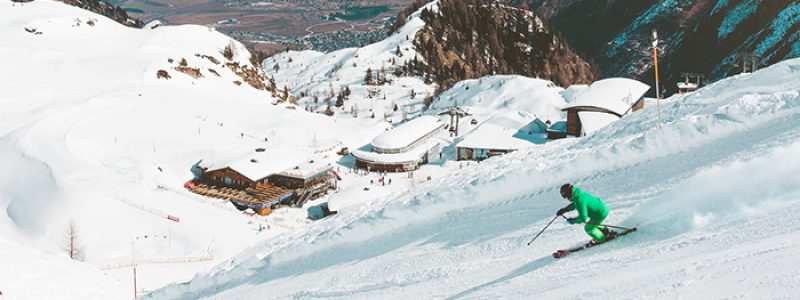








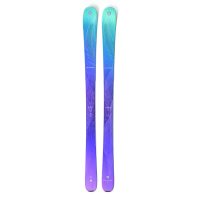
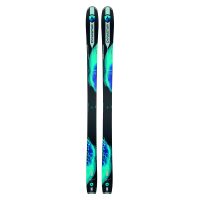
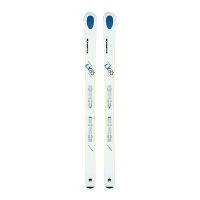
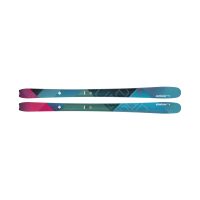

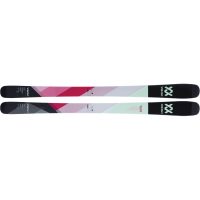
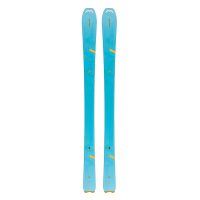
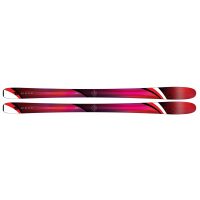

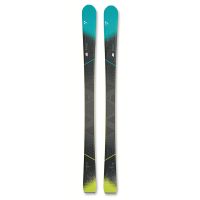
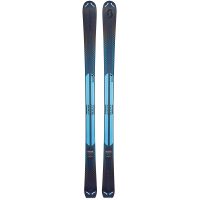
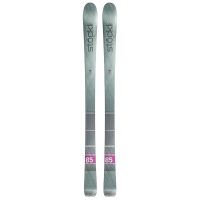
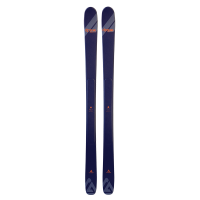
 88
88 